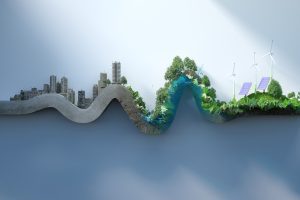Machine builder vs end user production
In the industrial sector, end users running factories and OEMs providing machines are part of the same ecosystem. Machine builders have to work within their own rules and constraints while still meeting their customer needs. This can be a tough balancing act that requires constant adaptation at all levels, in all domains.
End users, for their part, must negotiate the ongoing evolution of their own customers – from mass production to extreme customization, rapidly changing needs, global competition… Their challenges include:
- Profitability (from Capex to Opex, to more easily adapt to demand fluctuations)
- Search for efficiencies (through OEE developments, in either production or energy consumption), sometimes leading to partial outsourcing
- Agility (more automation, more plant floor adaptations…)
All these factors obviously impact the purchasing choices of machine builders and end users.
Machine as a Service (MaaS)
This is where MaaS comes into play, but what is it? MaaS is a machine (or piece of equipment) provided by a supplier, with guaranteed performance. The machine is rented (on a daily, monthly, or yearly basis), instead of purchased, and maintained by the supplier. This option of renting a machine – instead of investing in buying one – can often be the most suitable choice for end users and is gaining in popularity.
New technologies such as IIoT, remote monitoring, cloud storage, or analytics are considered to be the TRIGGERS to developing the MaaS business. Let’s take a closer look at that assumption…
New technologies bring numerous benefits
These technological evolutions are certainly very attractive for OEMs because they can finally better understand how their machines are used, how they perform as they age, how performance is linked to climatic conditions, to operator behavior, to production output, etc. OEMs can now get direct feedback about what they sell without any biases from human interpretation.
Using this highly valuable information, machine builders gain insight into the building and selling of services, along with learning how to evolve the design of next generation machines (more robust, easier to use, cheaper…) and avoiding unnecessary over specification. So, let’s design a connected machine and try to rent it out. Simple, right?
Not as simple as it looks
In reality, it turns out that a lot of the necessary changes are not solved by these new technologies. Selling a machine’s maximum technical characteristics is very different from renting guaranteed performance. It requires different sales teams, different marketing assets etc.
Also, machines need to be produced before being rented (customers will not wait three months to get the machine they rented). This requires investment, but also storage space. Logistics need to be organized to deliver the machine to the renter and to get it back when the rental period is over. The machines need to be cleaned, repaired, or upgraded for the next customer, which means dedicated teams are needed to manage the machine fleet.
These are just a few aspects to consider, recognizing that the whole “go to market” is about to change between the machine manufacturer and the end user. The value chain is changing, the actors are different, and all need to be paid according to their contribution.
In my next blog, I will share with you some of the business models being experimented with in this new go-to-market strategy.
Interested to hear your thoughts on this topic or click here to learn more about our Smart Machines.



